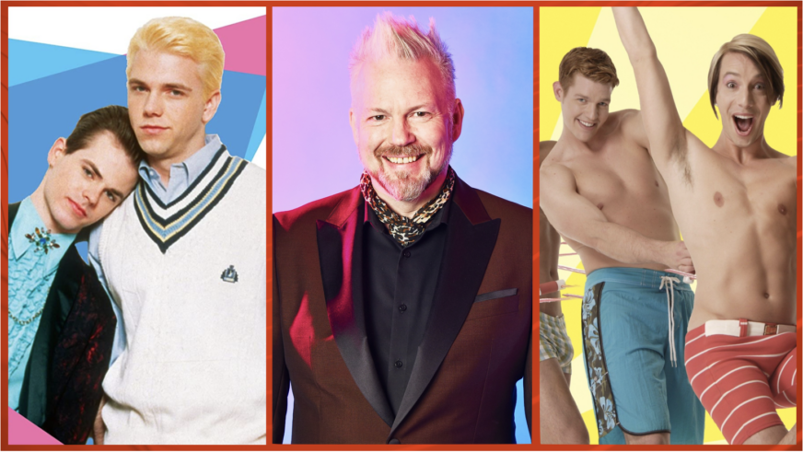
1998’s Edge Of Seventeen is a nostalgic and earnest tale about coming out and coming of age in a small town.
2008’s Another Gay Sequel: Gays Gone Wild!, on the other hand, is a raunchy and ridiculous comedy spoof sequel, with gay sex jokes that will still make you blush.
Given their wildly different tones, it’s almost hard to believe these movies come from the same person. But, with a signature fearlessness and a make-no-apologies approach to queerness, both are undoubtedly the work of filmmaker Todd Stephens.
Born in suburban Ohio, Stephens emerged as a voice on the independent film scene at the tail-end of the New Queer Cinema movement with Edge Of Seventeen—which he wrote inspired by his own teen years—earning critical acclaim.
After his follow-up film, Gypsy 83 (also his official directorial debut), had difficulty getting distribution, Stephens took a hard left turn into goofy parody with Another Gay Movie, which was divisive but quickly amassed a cult following. Two years later, its sequel was meant to be bigger and bawdier, but it had plenty of its own hiccups on the way to getting made.
This June marks a milestone anniversary for both films, so we thought there was no better time to call up Stephens for a trip down memory line. As it turns out, each feature presented him with unique challenges that took the writer-director to some dark places.
But, 25 and 15 years later, respectively, Stephens is able to look back at Edge Of Seventeen and Another Gay Sequel with a clearer perspective, and we’re able to celebrate him for the trailblazer that he is.

Happy Pride Month, Todd!
Happy Pride!
This is an extra special June for you because it marks both the 25th anniversary of Edge Of Seventeen—which premiered June 14, 1998 at Newfest in New York—and the 15th anniversary of Another Gay Sequel—which premiered June 28, 2008 at Frameline in San Francisco.
So, first let’s talk Edge Of Seventeen, which was directed by David Moreton, and written by you—heavily influenced by your own adolescence in Sandusky, Ohio, correct?
It wasn’t just inspired by my youth—I was literally trying to recreate my youth, you know?
I actually started off as the director, and I did all the casting. David was the producer, then we rehearsed it, hired the crew—all that. I directed about a quarter of the movie. So, we went back to Ohio, and we tried to recreate it from old photographs—down to my Cedar Point uniform. We shot in my old house, the exterior of the actual Universal Fruit & Nut Company, in my school, and all these places so that we could make it as authentic and real as possible.
But what happened was, in that process, I just kind of lost it. Because I left there when I had just turned 18 and sort of ran off to New York to go to college. And I thought it was just going to be a kind of sweet, innocent, queer John Hughes movie, you know? But I had lived in New York for 10 years, and I forgot about the sort of dark side of growing up. So that all kind of came back. [Laughs.]
I learned an important lesson that you can’t really recreate the past—it’s just going to be different. You know, actors are going to interpret it a different way, and you have to find a new life with it. But I just really got lost. It was sort of horrible, actually.
This was also a time when this idea of a “queer film” was pretty rare, so, in addition to what you were personally working through, were you also having to grapple with external pushback from folks who were opposed to it?
One thing I remember is that we lied to everybody in town about what the film is actually about. Like, we created a fake script, and changed the name “Rod” to “Rhonda.” Because when you’re shooting in a small town, you need a lot of help with locations and extras and all that kind of stuff. And we just felt that people wouldn’t help us.
I remember with Cedar Point—the amusement park it’s set at—trying to pull the wool over their eyes. And, somehow, word got out that it was queer, and we started having issues with that, losing some locations and things. So it was weird!
And another thing was, my parents—who are now amazing, and the biggest PFLAG-waving, most supportive, loving, amazing people in the world—literally took me out to lunch one day and said, “Todd, please don’t let anybody know that this is a gay story.” So there was a lot of shame, and it sucked for me because I was going back home to Ohio to make this movie that was affirming myself as a queer person. And, here, we basically decided to go back into the closet and lie about what the movie was about. And that was sort of part of the soul crushing part of it for me that I wasn’t prepared for.
It was hard making queer films back then—it was much, much harder. But, that said, there still were amazing people that were willing to commit to it and to take the dive. And I’m just really thankful to them for doing that and, by their guts, sort of changing the world in a small, small way.
Related:
Right, in retrospect, this is a movie often discussed in the pantheon of New Queer Cinema, and it’s one that really helped define what we understand as a “coming-out story.” I mean, queer audiences can say now that maybe there are even too many of those, but Edge Of Seventeen sort of established the mold—so much so that you even parodied it in your own spoof, Another Gay Movie. Does the big coming out scene still hold up for you?
That that scene is interesting for me, too, because that’s one of the scenes that I directed, and remember, and I thought that I was doing a terrible job at the time! Part of it is that I had literally gone into a depression—and I’ve talk about that before, so it’s not a secret or anything. So, it was weird watching it later and seeing how brilliant the actors were and thinking at the time that I was screwing it all up.
When I watch Edge Of Seventeen—and I watched it again a number of year ago—the thing that really hit me the most is the Maggie character, and Tina Holmes’ performance. That’s sort of what killed me—everything did—but she’s just so brilliant, and we were cutting so many of her lines out and simplifying it in order to make it work.
I want to jump ahead a bit to make sure we touch on Another Gay Sequel: Gays Gone Wild!, as well, because you and I have had extensive conversations in the past about the anger and rebellion that fueled its very silly predecessor, Another Gay Movie, in 2006. When you made the sequel two years later, were you still working through though feelings?
In a way, no. I literally remember my collaborator and co-producer Eric Eisenbrey and I, on the set of Another Gay Movie, watching Michael Carbonaro knocking on Graham Norton’s character’s door, Mr. Puckov, and—during a break, coming up with the whole idea for a sequel on the spot. Another Gay Sequel was really borne out of joy, of having so much fun being so stupid on the first movie, playing around with these people that I adored in this crazy, colorful world. A la Scary Movie we were like, “We should do a sequel!”
So, there was still rebellion, but it was mostly inspired by the amazing time we were having making the first movie.
The main friend group returns for the spring break-set sequel, but only one of the actors—Jonah Blechman—reprised their role. What do you remember about how that unfolded?
Well, when I started talking about making a sequel, Jonathan Chase [who played Jarod in the original] made it really clear that he wouldn’t [be able to return.] So, let’s go there with the challenges of making queer film at that time: Jonathan’s management, when they saw Another Gay Movie, they freak out, and they didn’t even let him participate in the publicity or any of that stuff.
Jonathan, himself, loved the film and was really proud of it. But he was really straight with me when I talked to him about a sequel, like, “There’s no way that I’m gonna be able to do it,” you know? And so I understood. Plus, we thought it’d be kind of fun to do a Bewitched thing, having a new actor playing that one part and making a joke of it.
The rest of us—including Ashlie Atkinson, Michael Carbonaro, Mitch Morris, and Jonah Blechman—we set out to do a sequel, so I wrote a first draft and we did a couple of staged readings for Newfest and the Philadelphia Queer Festival. So, they were all there, they were involved in helping to workshop it, and we got the money to make it from the distributor, TLA.
So, the crew was literally down in Fort Lauderdale scouting locations and getting ready to shoot when—I think it was Mitch who called me first and said he couldn’t do the movie? And then, five minutes later, Michael called and said the same thing. And I was in shock because we not only had such a great experience making the first movie, but we had become really good friends, you know? And they were like, “Yeah, my people don’t want me to do it, they don’t want me to play another queer part. I’m so sorry, I love you, but I can’t do it.”
I mean, I was devastated. I’m sure they don’t mind me saying: I didn’t speak to them for many years after that. The great part of it is that—thanks to you, to be honest, this amazing dude who did this oral history of Another Gay Movie [Editor’s Note: In 2021, Cameron Scheetz collaborated with Stephens on a reunion for the film for The A.V. Club]—we were eventually able to bring everybody back together again. Time heals all wounds, you know? So, fast forward, all these years later, and we’re all kind of reconnected. We’re sort of a family again. And I love that because making Another Gay Movie was the most fun I’ve ever had making a film. It was just amazing.
But I’m not gonna lie: Making Another Gay Sequel was a challenge because I was all set up to play with my family again, then it all kind of crashed and fell apart. I would never have made the sequel had they not agreed to participate. But, by that time, we were already in pre-production, so it was too late to stop.
So I spent most of pre-production flying back to New York and LA to try to find people to replace those guys. Jake Mosser, Aaron Michael Davies, and Jimmy Clabots—who replaced them—are great, and they did great work. Plus, I got to work with RuPaul and Brent Corrigan—who was amazing as the Merman—who all really had a chance to shine. And it was fun to shoot, too, but it was a little more fraught. It made that production more of a challenge.
Related:
But, right, to shift to happier memories, you did pull in a lot of fun guest stars for the sequel. Ru—and this was before Drag Race was a thing—but also Lady Bunny, Amanda Lepore, Willam, adult film star Brent Corrigan, as you mentioned, and even Perez Hilton…
I remember the Amanda Lepore scene in the airplane: She was playing a stewardess for, I think, Trans America Airlines—there’s so many things that are just so inappropriate now—but, when we shot that, my mom and dad were like extras and they were they were sitting in the front row of the plane. So, Amanda has a moment where she rips her uniform off and says, “And I may be used as a floatation device.” And my dad had no idea that was going to happen, so that was a fun full-circle moment considering the conversation we had back during Edge Of Seventeen.
And RuPaul, right, that was before Drag Race! Ru was maybe even formulating some of those ideas then. But, for that character, we were really inspired by Little Richard and Dionne Warwick, and Ru had this old box of ratty wigs that were all sort of busted. And Ru was really into wearing those for the movie and sort of doing this fluid character that wasn’t really in drag, but was somewhere in between. Ru improv’d a lot of stuff, and that was amazing.
And Brent Corrigan, that was all shot on a really magical day in this pool outside of Miami. The makeup artist, Joe Castro, had designed this amazing like mermaid tail for him, and he looked so beautiful, and was just so charming and wonderful—and he had a great chemistry with Jonah Blechman. I loved his part.
But, really, the idea for both Another Gay movies was just to celebrate out, queer people at the time, and really showcase them. So it was a dream come true to work with all of them.

To zoom out bigger picture, It’s so cool to be able to talk to you about these two very different movies you made, which were released 10 years apart, and sort of exist in these very different tones and worlds.
I always like to say: I’m a Gemini, so so I have these different sides. I think that the Edge Of Seventeen, Gypsy 83, and Swan Song are the more autobiographical side of me, but then Another Gay Movie land is also a big part of me that I’m very proud of.
The whole idea was to be able to just laugh at ourselves and not take ourselves so seriously. And there was a certain freedom in that, and it was kind of intoxicating to create those fantasy worlds. And, to be honest, there’s a part of me that wants to do that again, especially if that means reuniting with some of my old buddies. I don’t know what it is, but we got to make another together somehow.
I mean, they’re inappropriate, they’re shocking, they’re incorrect in a lot of ways. But they were balls to the wall, fun, free, and fearless. And, yeah, there’s a certain rebellion in it, too—and maybe I need to get in touch with that side of me again.
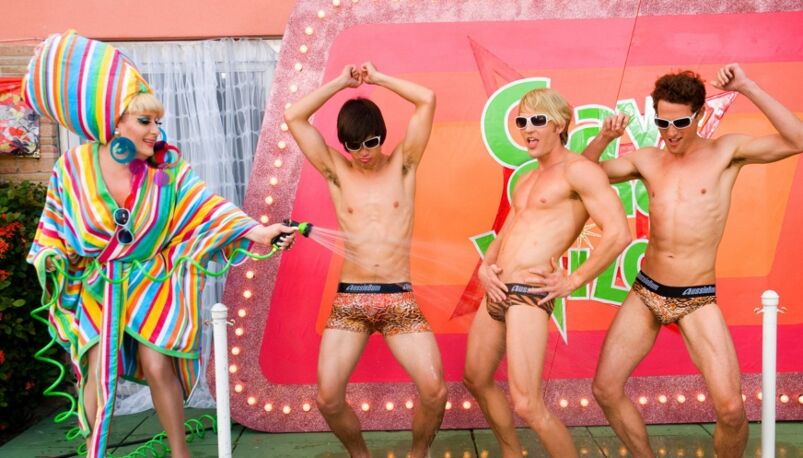
Well, it’s that fearlessness and rebellion that I see connecting the dots between these two movies of yours we’ve talked about today. Even as the industry changes and becomes more inclusive, you’ve continue to put yourself out there as a filmmaker.
And there’s no doubt that the industry is just massively different now. I’m sure that there’s still some fear involved—we’re still taking risks—but thank god it’s changed. TV and film feel much more free. But, in a way, you can take that for granted, you know? It’s the whole “two steps forward, one step back” thing.
I don’t want to take for granted that we still need to be fearless and still put ourselves out there. Yes, things have gotten a lot better in media, but look at the political climate. It’s all the more reason to have queer stories out in the world.
Edge Of Seventeen is streaming on Kanopy, and available for digital rental via AppleTV, Google Play, Prime Video, Vudu, and YouTubeTV.
Another Gay Sequel: Gays Gone Wild! is streaming on Dekkoo, and available for digital rental via AppleTV and Prime Video.

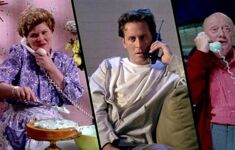
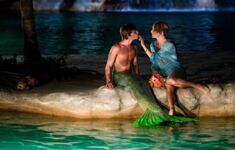


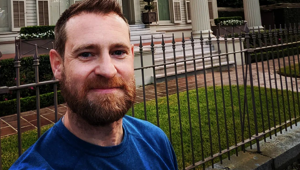

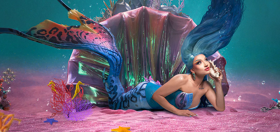
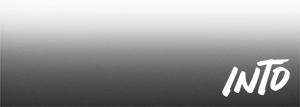
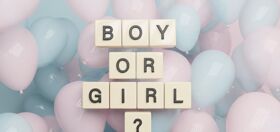










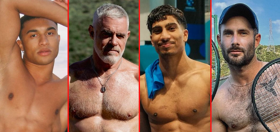

wikidBSTN
In addition to being a great gay coming-of-age movie – EDGE OF SEVENTEEN is also one of the best 80’s movies of all time – gay or straight. No other movie better captures the middle-class vibe of the 1980’s than EDGE OF SEVENTEEN.
barryaksarben
Edge of Seventeen is one of my all-time favorite films as I came from the midwest and it captured the feel of the time better than any other movie set in that time period. Thank you for it
lykeitiz
Wish I would have seen this article when it came out. Don’t know if this comment will be seen now, but I have to say, Gypsy ’83 does not have the place in history it deserves. Seriously great filmmaking!